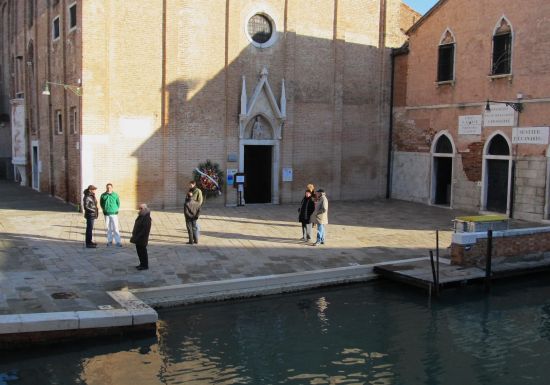
Day before yesterday, like yesterday, began in superb form: One of those dazzling winter mornings — gleaming air, scintillating sunshine, cold (but not too cold), no wind. Perfect. Just the kind of morning that makes you take deep happy breaths and think of going to a funeral.
Of course that’s a stupid thing to say. Nobody wanted to go, least of all the suddenly departed. And whether it’s winter or summer, sunshiney funerals make me feel worse than rain and gloom.
I don’t make a hobby of attending funerals, though by now I’ve been to a considerable number of them. They almost always involve either someone in the rowing world, or a former colleague of Lino’s. He only goes to them because not going would be worse, but there are plenty of people who seem to find them morbidly enjoyable.
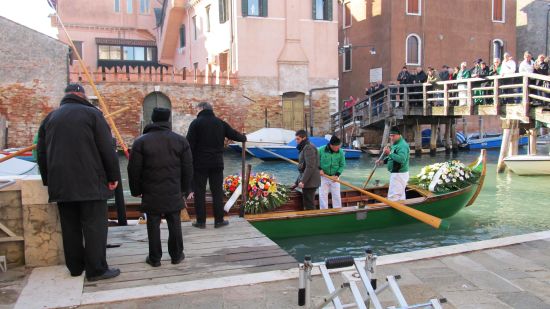
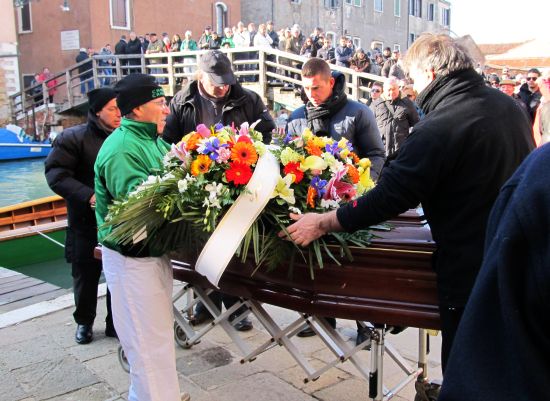
One of the most impressive funerals I ever attended was for legendary Venetian-rowing champion Albino “Strigheta” Dei Rossi in 2004. The ceremony was in the basilica of San Giovanni and Paolo, and the casket was borne to its final resting place in the center of the “Disdotona” (the 18-oar gondola of the Querini rowing club), rowed by 18 of the cream of the current champions. Thrilling, but it struck me as being more toward the spectacular and less toward the personally-moving end of the scale of mourning. I don’t recall any damp eyes or expressions of sadness.
But day before yesterday was different, and even more so was a funeral last August, maybe because they were ceremonies for people who would never be legendary but who would be deeply missed.
The most recent occasion involved Luciano Costalonga, a former president of the Canottieri Cannaregio rowing club. I knew him, though not well. By now I more or less know a substantial number of people in the rowing world, and many of them have (unlike me) been getting older. I wouldn’t have classified him as old –he was only 71. But he had recently undergone an operation (I don’t know for what), and a few days ago just dropped dead.
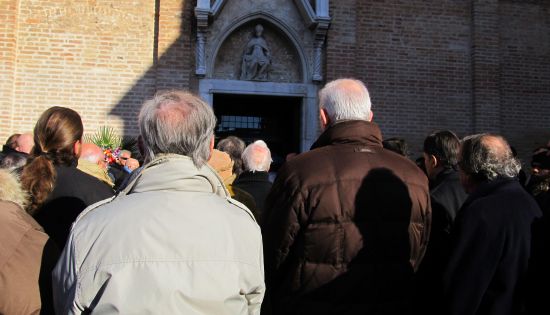
Something of the same thing, though worse, happened last August to a gondolier named Michele Bozzato (whom I didn’t know). Lino knew him, but naturally Lino knows — or in this case, has known — almost everybody.
Bozzato’s real love was singing, the obituary said; he had even sold his gondolier license (he kept working as a substitute), so he could devote himself to music full-time, forming a trio called “The Gondoliers,” with whom he cut a disk of Venetian songs.
He was tall, he was strong, he never smoked, he barely drank.
On August 8, he started to have trouble breathing. They discovered a tumor on his lung. They operated on him. Two weeks later he was gone. He was 49.
Bozzato’s farewell was amazing; it was more like what happens when a fireman or policeman dies. He had been involved in so many different activities, from soccer to basketball to rowing, and it appears that everybody loved him. The Gazzettino said there were a thousand people there, which I believe — I’m no good at counting crowds, but the church of San Marcuola was so crammed it was like a Turkish bath.
We stayed outside because there was no point forcing ourselves into a large sweaty room pumped full of carbon dioxide. Women were weeping. Men were weeping. I don’t mean wailing and keening, but there were many wet red eyes and the sound of many noses being blown. And the silences between people standing around together weren’t the comfortable “At least it wasn’t me” sort, but more of a stricken “Of anybody at all, it shouldn’t have been him.”
What the two funerals had in common, though, was the general sense of a family loss. I’m not sure if I mean the Venetian family, which is shrinking inexorably, or the rowing-world family, or the gondoliering family. I do know that everyone seemed to belong to each other, and for the few intense hours of the ceremony it was not only easy to see, but to feel.
On the whole, there seems to be some difference of opinion on who to feel sorrier for: The person who’s gone, or those who are left. Oddly (in my view), Venetian sadness is directed at the departed. They have a little rhyme: El pezo xe per chi ch’el mondo lassa, chi che vive se la spassa. (It’s worse for the person who leaves the world; those who are alive can keep having a good time.)
By the look of things at the churches on these two occasions, though, I’m going to have to say that the people who were alive weren’t enjoying it at all.
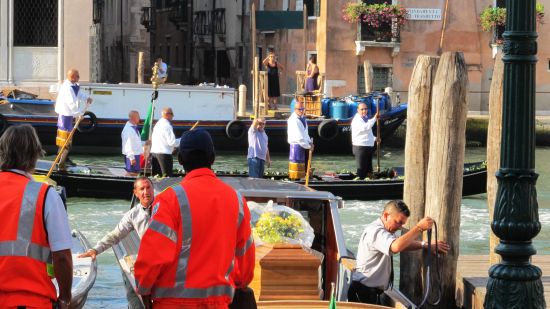
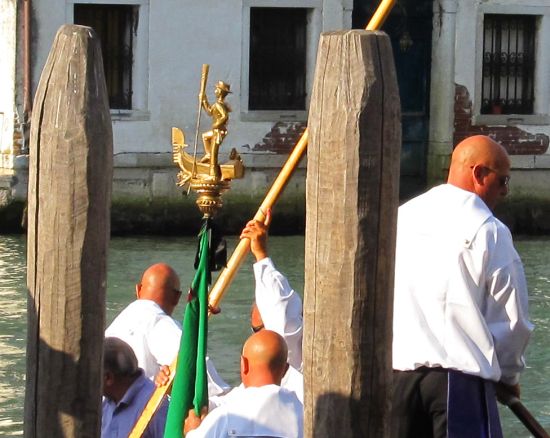
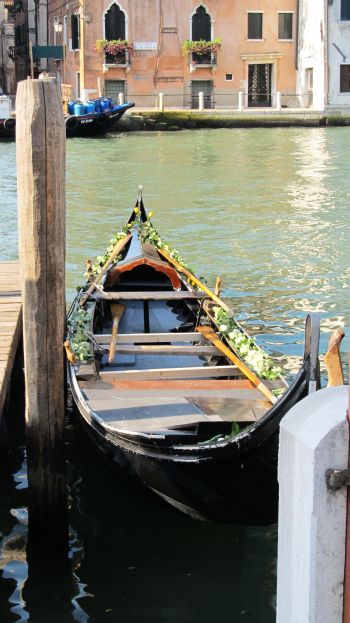


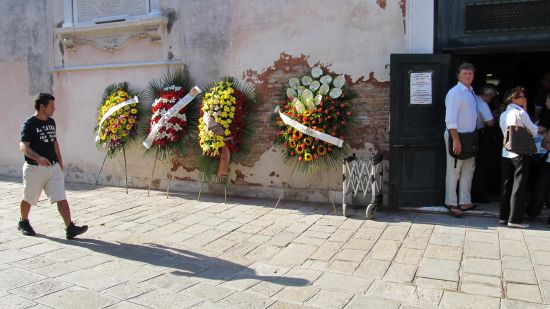
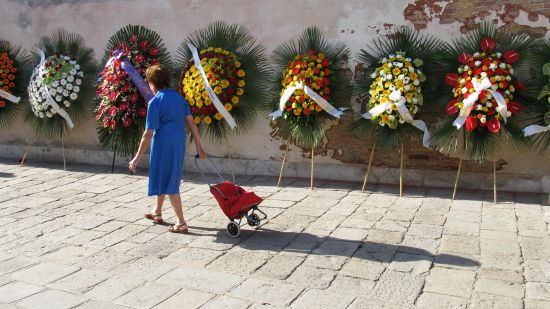
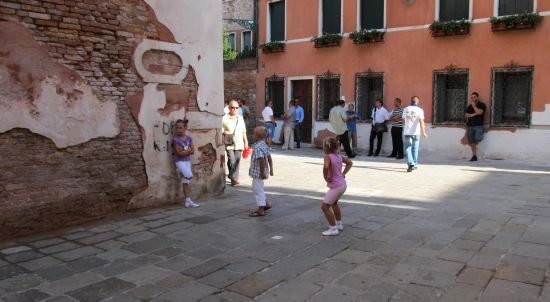
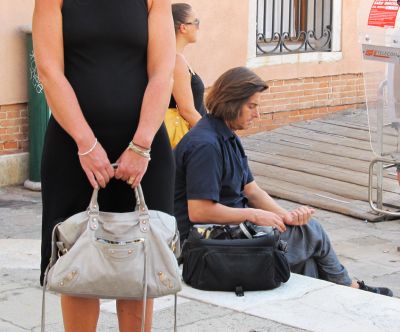
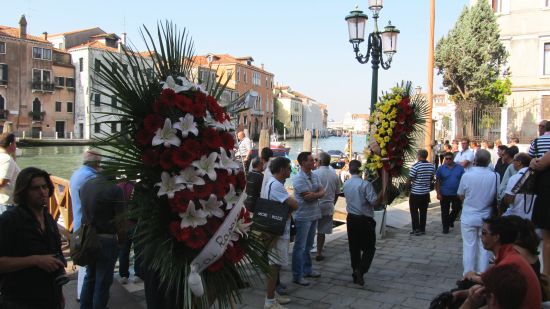
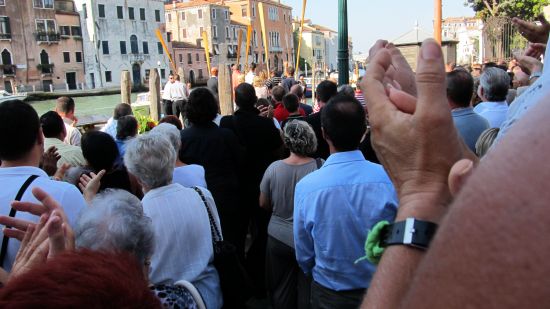
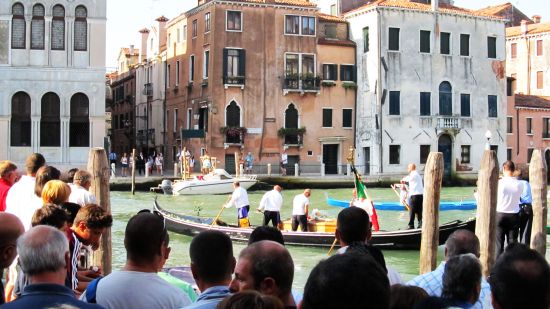
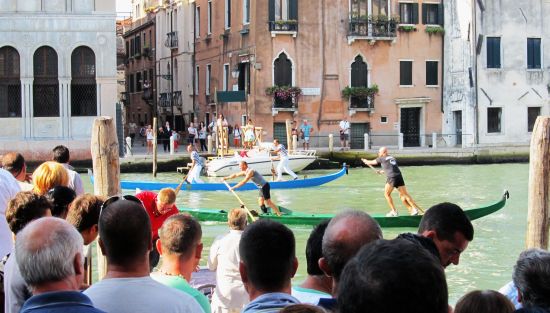

1 Comment
What a beautiful post. Thank you for sharing another moment of Venetian culture.